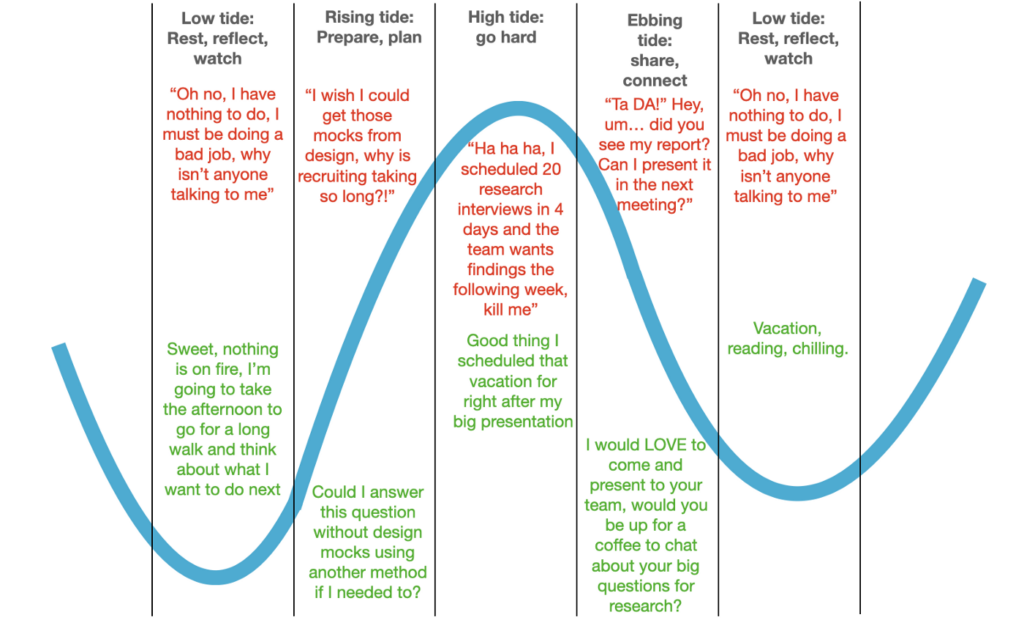As a UX research manager I spend a lot of time mentoring people and helping researchers get into the rhythms of their practice.
Researchers often work in spaces of ambiguity betwixt and between design, product, engineering, and even marketing and sales. For researchers new to the field, their role, their team or their companies, this can create a lot of anxiety around whether they are working “right”. I often hear “I don’t think I have a sense of what the day to day work for my role should be” followed by “I’m not sure if I’m doing a good job” and “am I doing the right thing?”. Because research processes often lack the structure of engineering and design sprints, researchers often feel like they end up in a defensive, reactive crouch, bombarded with requests for projects and drowning in work. Alternatively, researchers can end up with clear calendars, feeling like they should be busy but with no clear tasks to accomplish while they wait for their partners in design to produce mocks, or product to make a decision.This can be especially stressful for researchers new to industry who are accustomed to having end-to-end control over their projects.
Welcome to the research wave
You, as a UX researcher, probably will not have a predictable day-to-day schedule. Sorry. You may do better in thinking about your time in week long increments (ish).
- During a low week take advantage of the time you have to yourself to think, organize your space, catch up on email, but above all, don’t work if you don’t have stuff to do. This is a great time to take care of yourself and your personal life. Check in with your team, but overall don’t stress and enjoy it.
- As the tide is rising during transition weeks, keep in close contact with your partners sharing research plans, checking in on any artifacts you need for studies, and attending feedback meetings with your partners and stakeholders. During this time, you should feel busy but make sure you are still keeping time for yourself, eating and sleeping etc.
- When the tide is high (right before, during a project, getting immediate results out to stakeholders for a big decision) that is the time to lean in to the chaos. Don’t count your hours, it will make you feel bad. You may be scheduling interviews at off hours, traveling with your team, or deep in meetings digging though quant data. The tide can ebb right after you complete the study, or stay high though analysis and creating your reports for stakeholders.
- As the tide ebbs and the project wraps up, take the time to socialize your findings with stakeholders, schedule as many presentations as you can, and accept every invite to discuss the implications of your work with stakeholders.
- When you find yourself at low tide again feeling at loose ends, possibly with a sense of letdown and wondering what’s next, take a deep breath, maybe some PTO and when you’re ready, start working with your team to identify the next big questions and see if you can spot the next wave out on the horizon and get ready before it slams into you and knocks you into a reactive position.

As you gain experience and strength as a researcher you will venture into deeper water and learn to surf bigger waves. Just like surfing, try to avoid swimming alone and make sure you are prepared for deep water.
To summarize:
As a UX researcher, you are to some degree at the mercy of rhythms in your organization which are outside of your control (and possibly visibility). Learning to recognize and “surf” these waves is a hidden super power that can help protect you from drowning and make you more effective. Don’t worry if you feel a little at sea sometimes, it’s normal.








